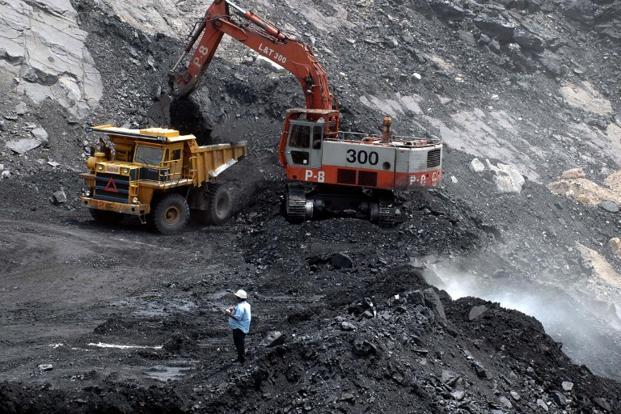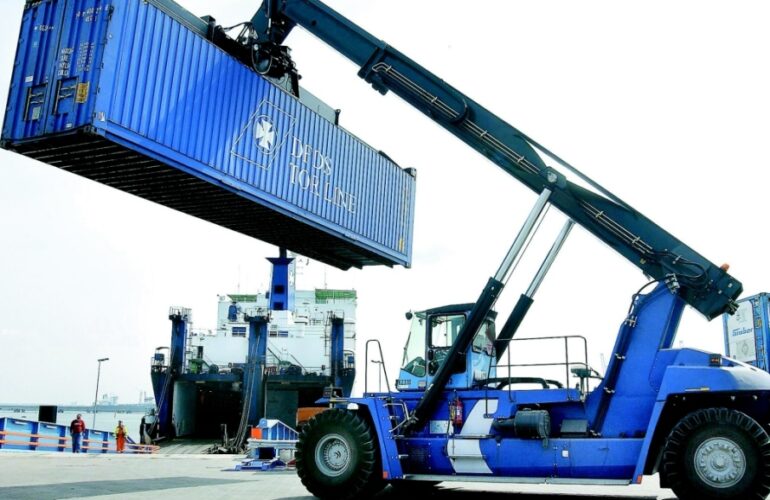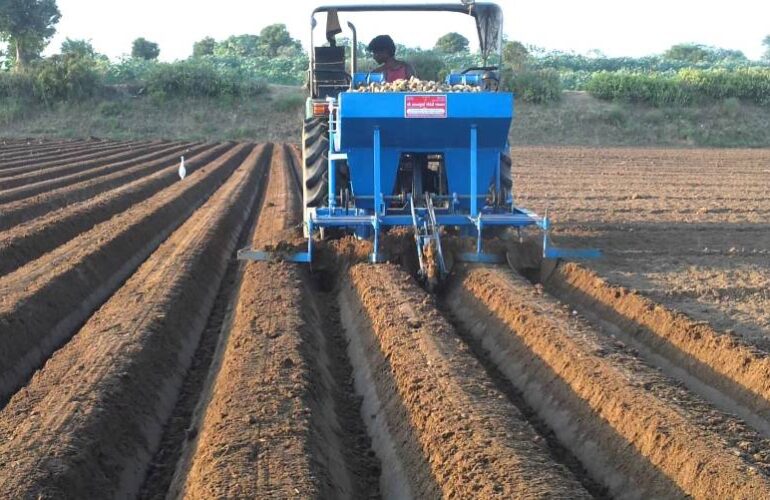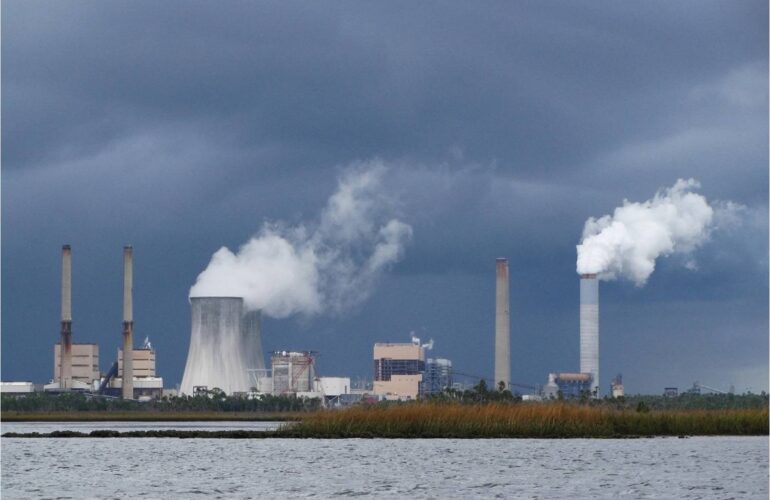Coal sector in India is largely public dominated with Coal India Limited (CIL) contributing almost 80% of total coal production. It has the majority share in coal mining and almost controls the total coal distribution channels of India barring captive coal block production and its use by some of the private developers. Once coal is being mined and extracted from the coal mines, it finds its way to the end user by various distribution channels. The majority of the coal is being tied up to the end use by long term Fuel Supply Agreements, known as FSA between the coal producer and its consumer. Some of the agreements are under the arrangement of FSTA (Fuel Supply and Transport Agreement), where railways is third part to the contracts. Apart from FSA, 10 -20% of the coal is reserved to be distributed through e-auction mechanism, which is open to all types of consumer. CIL is the sole authority to sign fuel supply agreements with the end consumers. Being the monopoly in the coal sector, CIL often resorts to uncompetitive practice and the agreement is heavily skewed towards CIL. The private companies complain that CIL favors the government sector companies. In the priority list of coal supply, the government companies get the first priority in case of emergency. With e-auction mechanism, CIL usually gets a revenue boost as e-auction price is 60 to 70% higher than that of FSA pricing. So it is alleged that CIL diverts its coal to e-auction platform rather than providing to its legitimate customers under long-term linkage. To boost the coal production, Government of India has been allocating coal blocks for captive development to state as well as to private companies. The government had allocated 195 coal blocks to various public and private sector companies. Out of the allocated coal blocks, 30 coal blocks started production and majority of others sat on the coal block doing nothing. In 2013, many companies were served notices that includes some of the prominent ones like Jindal Steel and Power Ltd, Tata Power Co. Ltd, GVK Power and Infrastructure Ltd and Jaypee Group. Post this over 204 captive coal blocks were de-allocated and subsequently some 70 blocks were awarded based on revised auctioning procedure. However, as against expected 100-mt coal production through the captive route in 2016-17, only 50% of this target was achieved. The limited success in limited privatization in form of captive coal block auction, was like government hitting a wall and had to take some radical measures and that what seems to be the key trigger for government to open up the sector for commercial mining. The Government of India has finally taken a plunge to open up its closely guarded coal sector, thereby ending the decades old monopoly of state-run Coal India Ltd (CIL) and its affiliates, marking a long expected reform aimed at boosting investment and output. The move is also seen as lowering prices and imports while introducing better technology, apart from saving on foreign exchange and improving energy security. The coal sector was nationalized in 1973. On 20th February 2018, the cabinet committee on economic affairs (CCEA) approved the methodology for auction of coal mines or blocks for sale of coal under the Coal Mines (Special Provisions) Act, 2015 and the Mines and Minerals (Development and Regulation) Act, 1957. Allowing the private sector to enter coal mining is expected to lift supplies and moderate prices while boosting investment. Non-state coal mining had thus far been allowed only for captive use. The Coal Mines Special Provision Act 2015 provided for opening up commercial coal mining to private and public entities. The government had in 2016 awarded coal blocks to state mining corporations for commercial mining. Coal India and its affiliates account for about 80% of total coal output. The government will hold forward auctions to select developers for commercial coal blocks. The auction process will be transparent like in the case of captive coal blocks and will be based on the amount companies agree to pay as auction fees per tonne. The two-stage bidding will start with the invitation of technical bids and there will be no end-use or pricing restrictions on the commercial coal blocks. The revenue earned from the auctions will go to the states where the coal blocks are located. The government is in the process of identifying a few large and mid-sized coal blocks for auction for non-captive purposes and is yet to fix timelines. The move will allay nerves of new power plants that were unsure of getting fuel supplies in a no PPA scenario as they can now contract with commercial coal suppliers to revive their projects & sustain operations. This move lead to newer business models in the energy sector and one call see fuel management companies to integrated energy companies focusing on pithead to socket model in power sector. The move will attract FDI from global companies that were waiting on the fence for coal sector privatization and likes of BHP Billiton, Rio Tinto, Glencore, Vale, etc could soon chalk out and entry strategy to India’s huge coal mining sector. InfraInsights research report “Commercial Coal Mining in India: Evaluating Potential Business Opportunity, Challenges, Risks, Critical Success Factors, Market Entry & Growth Strategy for Private Companies”, aims to provide indispensable information on coal sector in India, demand ~ supply dynamics, issues & challenges, unmet business needs of coal consumers, opportunity for private players and lessons that can be drawn from failure in materialization of production targets from auctioned coal block. The report will be an indispensable source of information for all private companies that would want to enter the coal sector in India and tap the commercial mining route.
- Executive Summary
- Approach & Methodology
- Coal Sector in India
- Market Landscape
- Coal in India’s overall energy mix
- Coal reserves
- Operational & Under development Mines
- Coal supply chain & key stakeholders
- Companies in coal sector in India
- Issues & Challenges
- Coal demand ~ supply landscape
- Coal Pricing landscape
- Existing and Evolving Regulatory Landscape in Coal Sector
- Legislative Framework
- Institutional Structure
- Regulatory Clearances for Coal Mining
- Coal Distribution Policy (NCDP) & its amendment
- Competitive Bidding Guidelines for Coal Mines Allocation
- Coal mines special provision Bill & MMDR Bill
- Coal Mining Technologies in India
- Open Cast vs Underground mining
- Evolution of technology in mining in India
- Mining equipment used in mining in India
- Key stakeholder in mining equipment segment
- Maturity of Coal mining industry in India
- Trend in coal production
- Technology-wise coal production
- Operational performance & efficiency of coal mining in India vs other markets
- History of long wall mining in India
- Level of mechanization across coal mines in India
- Private sector participation in coal mining sector in India
- Demand, Demand Segmentation and Evolving Demand Dynamics for Coal in India by 2025
- Industry-wise coal demand in India – Trend & Forecast
- Commercial Energy Sources of India – At a Glance
- Commercial Coal Consumption Pattern in India
- Commercial Coal Demand in India
- Categorization and Filtering of Coal Consuming Sectors in India – Risk and Opportunity Matrix
- Power
- Steel
- Cement
- Others (Sponge Iron, Brick Kiln etc..)
- Factors Hampering Growth of Major Coal Consuming Industries in India
- Supply challenges
- Coal import challenges
- Coal Logistics and Off-take
- Regulatory clearances
- Others
- Industry-wise coal demand in India – Trend & Forecast
- Coal in Indian Power Sector
- Overview of Power Industry in India
- Power Industry Structure in India
- Capacity Localisation of Power Industry in India
- Indian Power Industry dependence on coal
- Fuel (Coal) Cost in overall OPEX of power plant in India
- Current Demand for Coal and Supply Source for Power Industry in India
- Annual coal demand in MT by Power Industry in India
- Map of State/Regional spread for coal in Power Sector
- GCV of coal/chemical composition required by Power Industry
- Indigenous coal Vs Dependence on Imports
- Allocations of coal blocks to Power Sector: Status so Far
- Projected Demand and Supply of coal in Power Industry by 2020
- Projected Growth of Power Industry and demand of coal
- Projected supply of coal
- Likely coal supply side challenges
- Coal Sourcing options and Models for Power Industry
- Domestic Sourcing Options and Models
- Import Sourcing Options and Models
- Profiles of key coal consuming private companies in Power Sector
- Need-Gap analysis of power sector on coal sourcing
- Timely availability
- Price
- Quality
- Overview of Power Industry in India
- Coal Requirement in Cement Sector in India by 2025
- Overview of Cement Industry in India
- Cement Industry structure in India
- Capacity Localisation of Indian Cement Industry
- Likely outlook of Indian cement industry
- Indian cement industry’s dependence on coal
- Fuel (Coal) cost in overall OPEX of cement plants in India
- Current Demand for Coal and Supply Source for Cement Industry in India
- Annual coal demand in MT by Cement Industry in India
- Map of State/Regional spread for coal in Cement industry
- GCV of coal/chemical composition required by Cement Industry
- Indigenous coal Vs Dependence on Imports
- Allocations of coal blocks to Cement Sector: Status so Far
- Projected Demand and Supply of coal in Cement Industry by 2020
- Projected Growth of Cement Industry and demand of coal
- Projected supply of coal
- Likely coal supply side challenges
- Coal Sourcing options and Models for cement Industry
- Domestic Sourcing Options and Models
- Import Sourcing Options and Models
- Profiles of key coal consuming companies in cement Sector
- Need-Gap analysis of cement sector on coal sourcing
- Timely availability
- Price
- Quality
- Overview of Cement Industry in India
- Coal Requirement in Sponge Iron Sector in India by 2025
- Overview of Sponge Industry in India
- Sponge Industry structure in India
- Capacity Localisation of coal based sponge iron Industry in India
- Indian sponge iron industry’s dependence on coal
- Fuel (Coal) cost in overall OPEX of sponge iron plants in India
- Current Demand for Coal and Supply Source for sponge iron Industry in India
- Annual coal demand in MT by sponge iron Industry in India
- Map of State/Regional spread for coal in sponge iron industry
- GCV of coal/chemical composition required by sponge iron Industry
- Indigenous coal Vs Dependence on Imports
- Allocations of coal blocks to Cement Sector: Status so Far
- Projected Demand and Supply of coal in sponge iron Industry by 2020
- Projected Growth of sponge iron Industry and demand of coal
- Projected supply of coal
- Likely coal supply side challenges
- Coal Sourcing options and Models for sponge iron Industry
- Domestic Sourcing Options and Models
- Import Sourcing Options and Models
- Profiles of key coal consuming companies in sponge iron Sector
- Need-Gap analysis of sponge iron sector on coal sourcing
- Timely availability
- Price
- Quality
- Overview of Sponge Industry in India
- Coal in Steel, Brick Kilns and Process Industry in India: 2012 and 2020
- Overview of Steel, Brick Kilns and Process Industry in India
- Steel, Brick Kilns and Process Industry structure in India
- Capacity Localisation of steel Industry in India
- Indian steel industry’s dependence on coal
- Fuel (Coal) cost in overall OPEX
- Current Demand for Coal and Supply Source for steel iron Industry in India
- Annual coal demand in MT by steel Industry in India
- Map of State/Regional spread for coal in steel industry
- GCV of coal/chemical composition required by steel Industry
- Indigenous coal Vs Dependence on Imports
- Allocations of coal blocks to Steel companies: Status so Far
- Projected Demand and Supply of coal in steel Industry by 2020
- Projected Growth of steel Industry and demand of coal
- Projected supply of coal
- Likely coal supply side challenges
- Coal Sourcing options and Models for steel Industry
- Domestic Sourcing Options and Models
- Import Sourcing Options and Models
- Profiles of key coal consuming companies in steel Sector
- Need-Gap analysis of sponge steel on coal sourcing
- Timely availability
- Price
- Quality
- Overview of Steel, Brick Kilns and Process Industry in India
- Analysis of Thermal Coal Supply in India
- Thermal Coal Supply
- Coal Supply Structure in India
- Main Highlights of NCDP
- Coal Supply through Captive Model
- State Wise supply of coal and coal products
- Coal Supply Arrangements and Logistics Involved
- Logistics
- Coal Transportation through Railways
- Railways transportation capacity
- Projected transportation capacity augmentation
- Coal Transportation through Roads
- Coal Supply from Mine
- Pricing of domestic coal in India
- E-Auction of coal price
- Coal Projects and Future plan of production
- Coal Projects
- New Projects XI Plan
- XII Plan Projects
- Global coal supply dynamics for India
- Sea borne coal trade and implications for India
- Thermal Coal Import Projections
- Thermal Coal Supply
- Coal Imports Infrastructure in India: Current Constraints and Future
- Current Coal imports and traffic in India – Port wise analysis
- Overview
- Coal Import Traffic – port wise analysis
- Coal handling capacities of ports – Impacts of Delay on consuming sectors
- Import Infrastructure shortfall – Challenges faced by private players
- Silver Line or Black Spot for coal imports – CIL and Shipping Corporation upcoming JV
- Port Infra Locations – Relevance Matrix
- Opportunities for stake holder’s vis-a-vis deficit
- Current Coal imports and traffic in India – Port wise analysis
- Coal Imports Infrastructure in India: Current Constraints and Future
- Coking Coal
- Non Coking Coal
- Coal Imports Infrastructure in India: Current Constraints and Future
- Reason for allowing commercial mining for Captive Coal Blocks
- Captive Coal Block mining potential as per the blocks awarded earlier
- Projected vs Actual growth in Captive Coal mining and production
- Issues & Challenges involved in earlier Captive Coal Mining
- Recent changes in the Captive Coal Mining Sector, including outlook of the incumbent government towards domestic coal scenario & captive coal
- Opportunity analysis for commercial miners – is there a business opportunity?
- Operational Performance of CIL & its subsidiaries
- Equipment Fleet & Availability
- Total coal production
- Total composite excavation
- Total coal production per shift
- In-house coal production & OB removal vs outsourced
- Factors that pushed government for opening up of commercial coal mining for power sector
- Increase in efficiency and productivity
- FDI in sector
- Competitive pricing
- Case studies on why auctioned captive coal blocks didn’t yield anticipated results
- Land acquisition
- Environmental Clearances
- Regulatory Hurdles
- Technology issues
- Market accessibility issues
- Evaluating Coal Blocks that are likely to be auctioned to private companies for commercial mining
- High-level Analysis of the Bidding Guidelines & Parameters
- Eligibility Criteria
- Bidding Norms
- Guidelines for putting Technical and Financial bids
- Key check-points and considerations of the bidding process
- Illustrative case providing a high-level analysis of a competitive bid vs. uncompetitive bid
- Evaluation of cluster in which a coal block will be good opportunity for private miners
- Can private miners perform better than CIL
- Potential buyer segment for commercial coal miners
- Opportunity for MDOs to become full-fledged coal mining company
- Global case study on success of commercial coal mining model
- InfraInsights evaluation on factors that will determine success for private miners in coal Sector
 We create value for our customers by amalgamating deep functional and energy industry expertise. Our solutions range from in depth research reports to advisory services enabling our customers with energy market insights to take informed decisions, grow and improve on their competitiveness.
Leveraging our breadth of geographical reach we provide solutions in entire energy value chain be it coal, power, oil and gas or renewable. We are a reliable and efficient source comprising of best in class talent pool which provides answer to all the challenges of the energy industry
We create value for our customers by amalgamating deep functional and energy industry expertise. Our solutions range from in depth research reports to advisory services enabling our customers with energy market insights to take informed decisions, grow and improve on their competitiveness.
Leveraging our breadth of geographical reach we provide solutions in entire energy value chain be it coal, power, oil and gas or renewable. We are a reliable and efficient source comprising of best in class talent pool which provides answer to all the challenges of the energy industry



